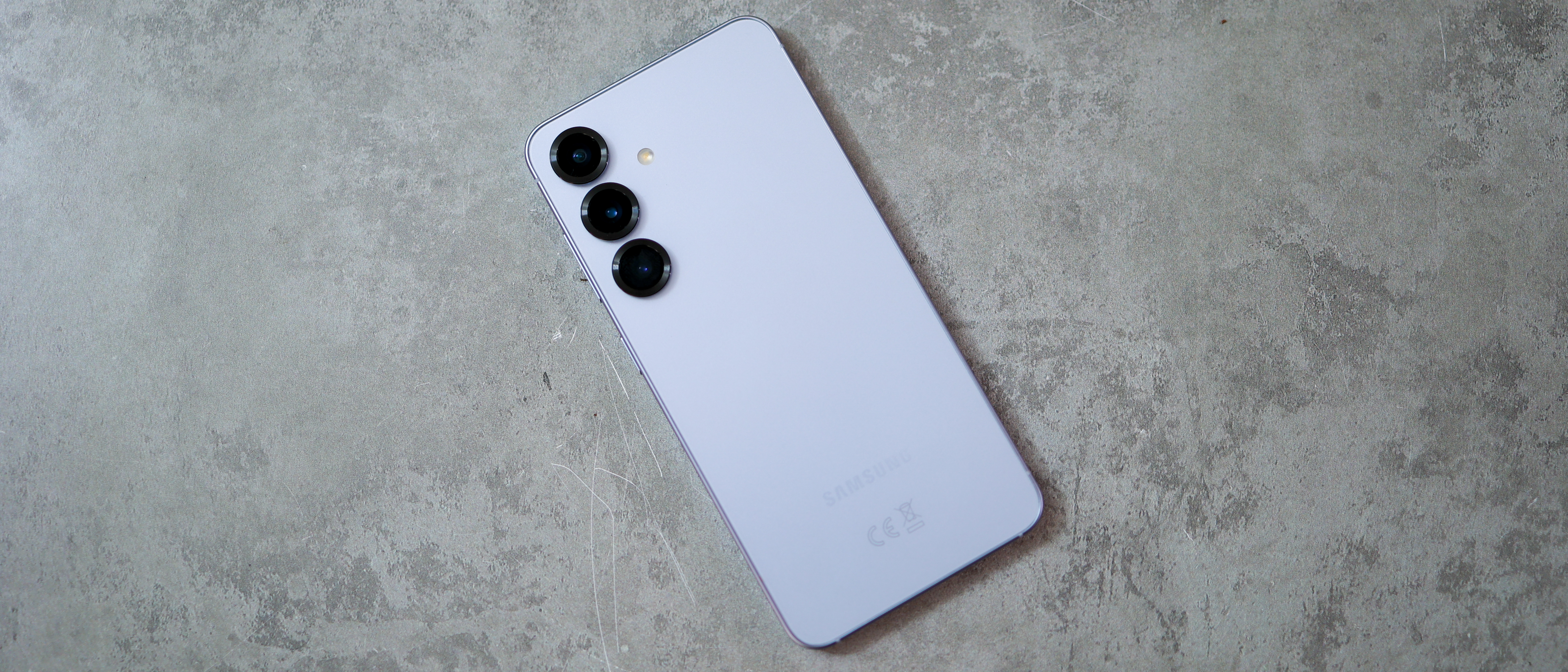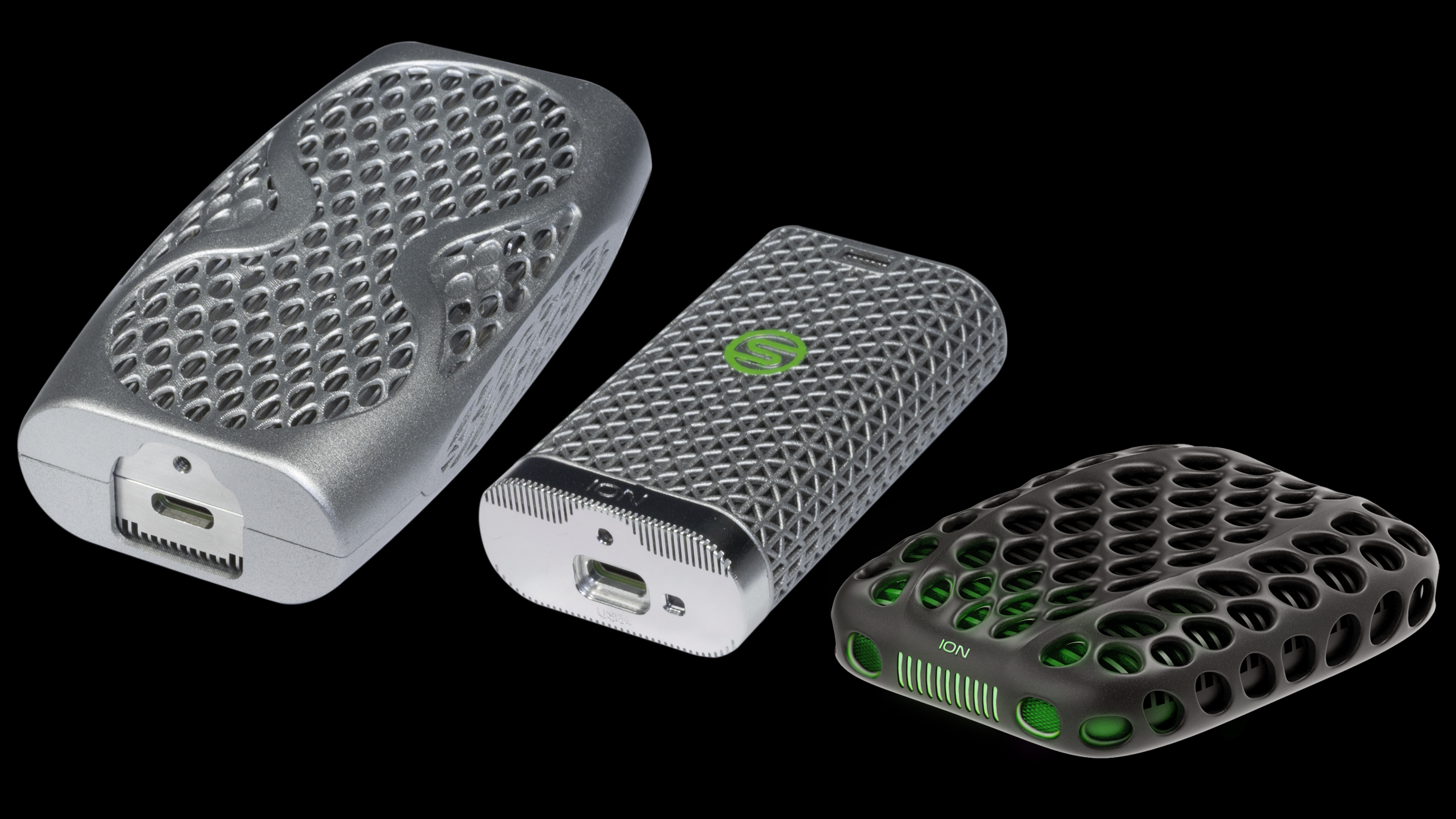Digital Camera World Verdict
There’s plenty to love about the Galaxy S25: it’s compact, and powerful, the display is great, Samsung offers 7 years of OS support, and surprisingly, the battery impressed too. The move from Exynos to Snapdragon levels up the experience in countless ways, but there’s no getting around to the fact that the camera system is getting tired, and apart from the welcome addition of LOG video, it struggles to iterate meaningfully. A great phone with a good enough camera system.
Pros
- +
Thin, light, compact, and premium design
- +
Excellent display quality
- +
Cool, powerful performance
- +
Seven years of OS & security updates
Cons
- -
No major camera upgrades over S22, S23 and S24
- -
Photo processing can miss the mark
- -
Weak telephoto camera
- -
New AI features currently add limited value
Why you can trust Digital Camera World
Samsung’s Galaxy S25 is the baby bear of the series, with the larger S25 Plus and S25 Ultra launching alongside to offer big phone fans something to wrap their hands around. With a drought of compact phones outside the Apple camp, though, the S25 will likely be the most compelling of the three for many.
This year, Samsung’s putting a Snapdragon 8 Elite processor – typically reserved for the Ultra – in all three S25 phones in the EU and the US. So, it’s safe to expect a performance boost and generally a more stable experience across heat management and battery life.
The Galaxy S25 also boasts a great-looking display, slim bezels, all Samsung’s new AI smarts and seven years of operating system updates. All those things lay the foundation for greatness, but when a phone is so slim and so light, cameras typically take a hit.
With the same camera rear spec as the S24, S23 and S22 before it, I’m going into this review with tempered expectations. Sure, the new phone will benefit from some 2025 photo processing and AI smarts, but you can only do so much with midrange camera hardware.
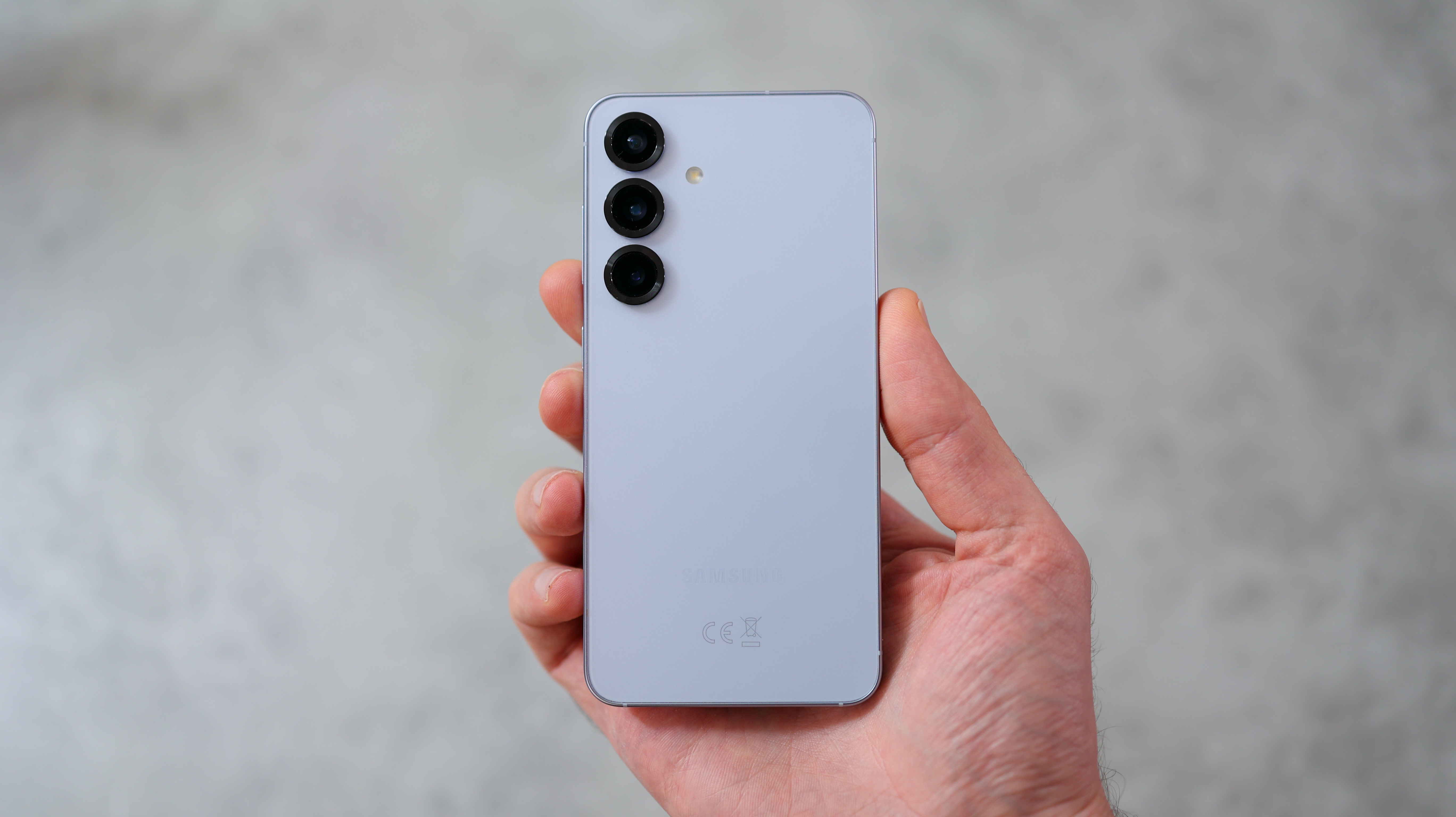
In the S25’s favor, it costs the same as the competition, specifically the Google Pixel 9 and iPhone 16, but that’s for the 128GB storage model. When you start adding storage, the 256GB version takes on the more specced-out OnePlus 13, or you could pick up the less powerful but Leica co-engineered Xiaomi 14T Pro for considerably less. Alternatively, for anyone who wants a smaller device, the Xiaomi 15 is expected to launch imminently in the West at a similar price to the Galaxy S25.
With all this competition, does Samsung’s premium, pocketable flagship deserve a place in your palm, or would you be better off opting for alternatives that arguably offer more for less?
Samsung Galaxy S25 design
The Galaxy S25 looks a bit like a smartphone by numbers – the kind of design that pops up when you type “smartphone” into a stock image library search bar, but that isn’t necessarily a bad thing. The compact size makes it comfortable to hold, the flat sides make it easy to grip, and the rounded corners nuzzle comfortably into a palm.
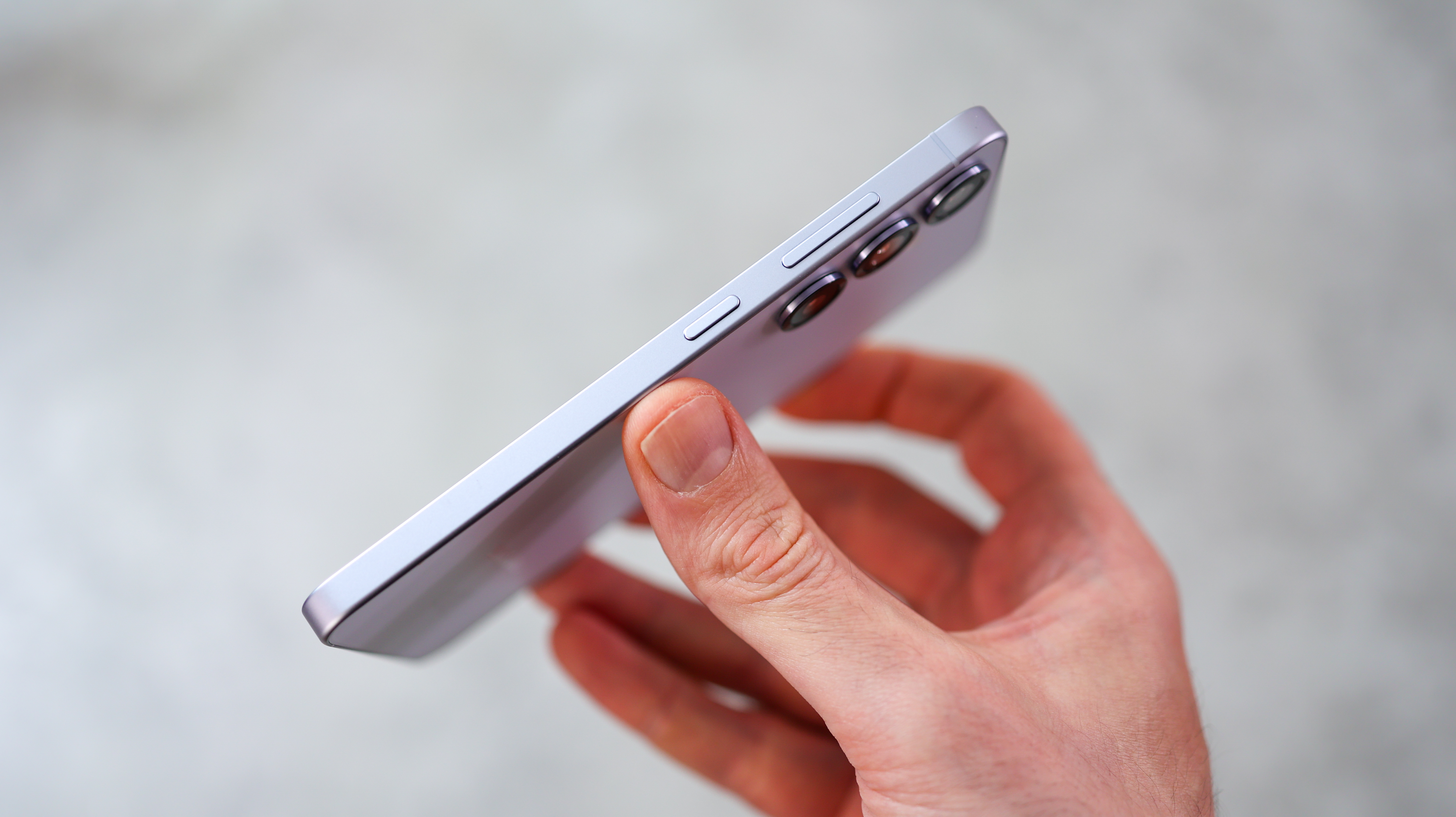
Made of aluminum around the frame and Gorilla Glass Victus 2 on the front and back with IP68 water and dust resistance, despite being so thin and light, there’s a degree of durability assurance here too. That said, it misses out on the titanium and anti-reflective display of the S25 Ultra.
At just 7.2mm thin, it’s one of the slimmest phones on the market, and weighing 162g, it feels almost featherweight after using chunky smartphones like the Honor Magic 7 RSR and iPhone 16 Pro Max.
While its design is safe, the Galaxy S25 still looks good, with standard color options including Icy Blue, Mint, Navy, and Silver Shadow, and more available online. Each sports a matte finish that does a great job of keeping fingerprints at bay, and the matte frame is color-matched for a cohesive look.
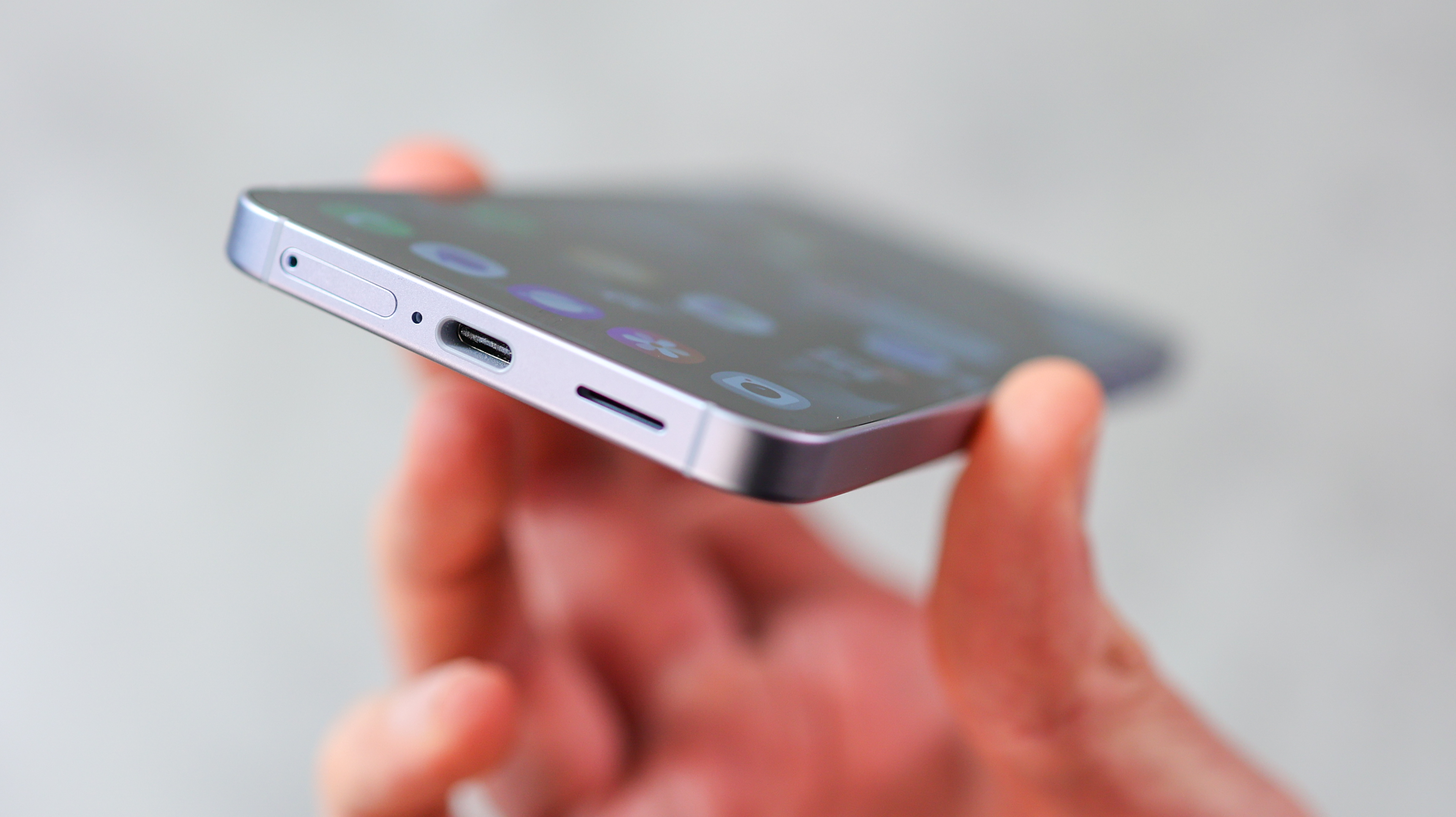
Ultimately, while Samsung isn’t shaking things up, the Galaxy S25’s compact design, premium feel, and tasteful finish ensure it’s comfortable to use, feels like a flagship, and looks the part too.
Samsung Galaxy S25 screen
Part of the Galaxy S25’s charm is its compact display, which is matched with an ultra-thin bezel (introduced on the S24), making the front of the phone look wonderfully immersive.
At 6.2 inches, there’s plenty of room to type on the S25’s screen comfortably with one hand or two, without anything feeling like a stretch. The flat sides also help ensure it’s comfortable to use in both portrait or landscape when gaming for example, so the ergonomics of the screen are a win off the bat.
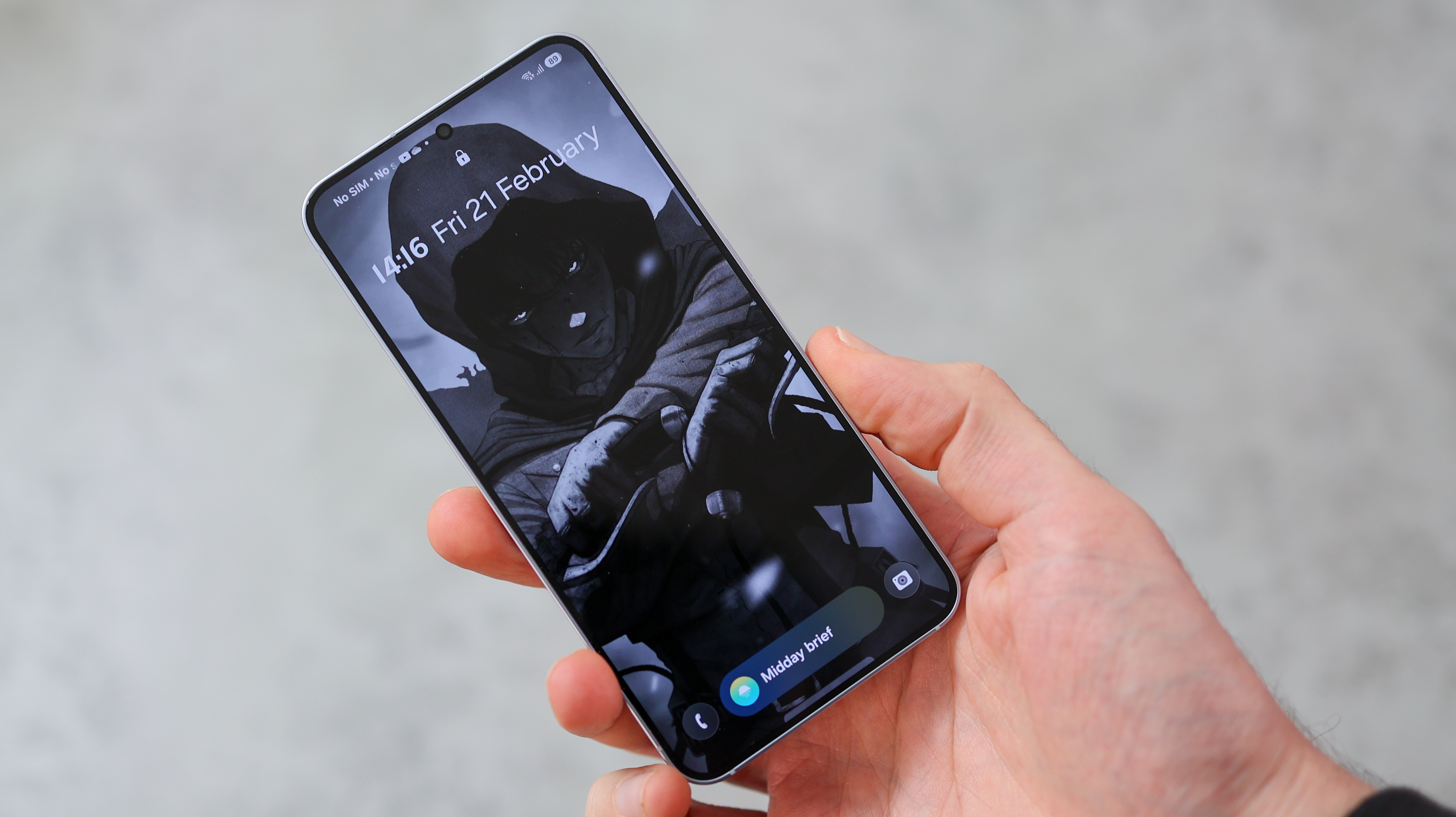
Samsung’s AMOLED screens are typically some of the best out there, and the S25 displays vibrant, rich colors, impressive contrast, and ample brightness for comfortable outdoor use. It’s also sharp with impressive viewing angles, making it a bit of a home run despite no huge upgrades over the S24.
Getting into some numbers, the 2340 x 1080 resolution means the S25 showcases around 416 pixels in every inch of screen, while the 2600 nits peak brightness is class-leading at the size. With a smooth 1-120Hz refresh rate, content glides, and when watching content back, Netflix HDR10 certification means it’s easy to take full advantage of the quality on offer.
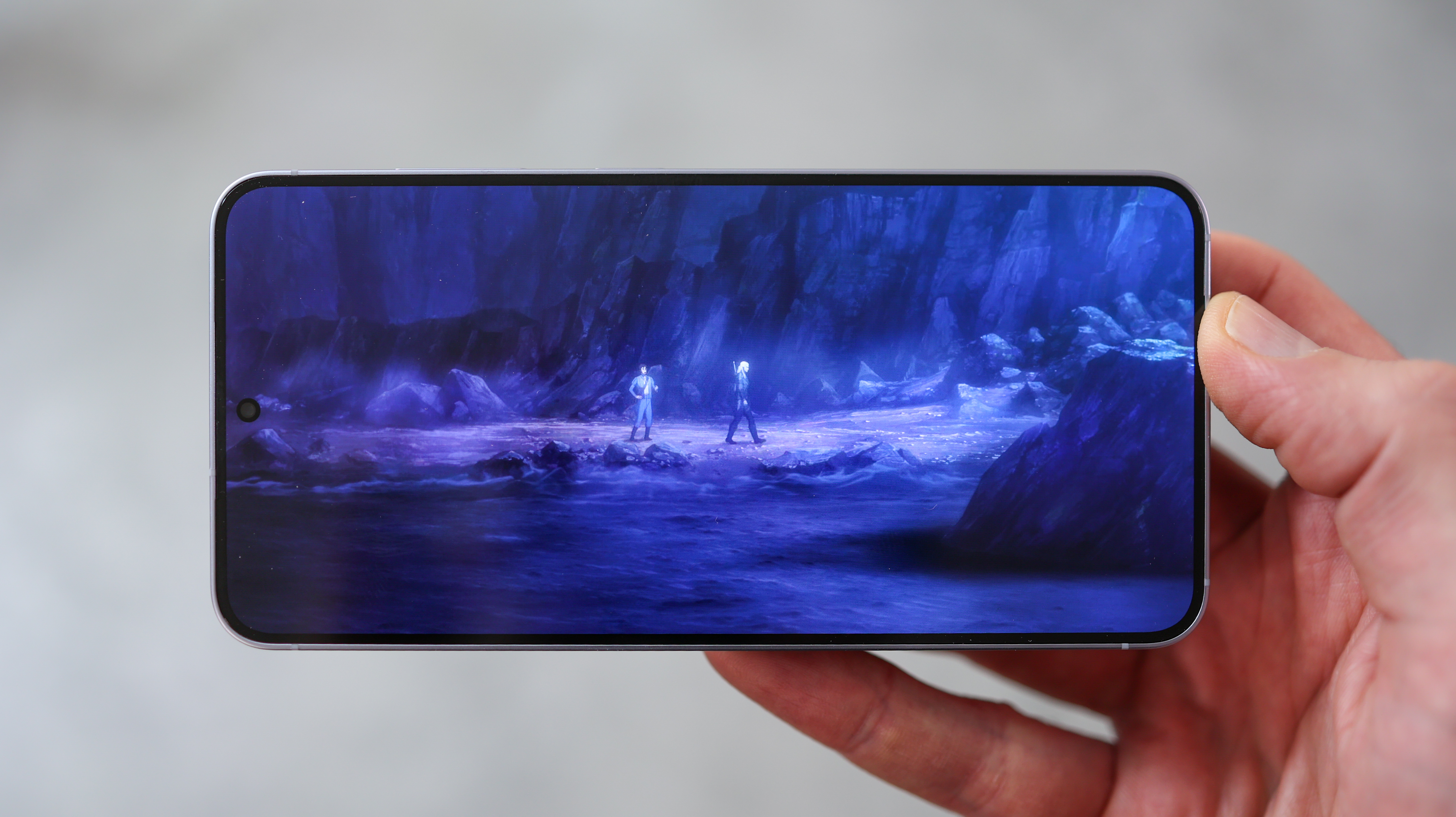
Samsung Galaxy S25 camera specs
The Galaxy S25 has three cameras around the back and one on the front, with the same sensor and lens specs as the Galaxy S24, S23, and S22 around the back:
24mm wide camera: 50MP, 1/1.56-inch sensor with an f/1.8 lens and OIS.
67mm telephoto camera: 10MP, 1/3.94-inch sensor with an f/2.4 lens and OIS.
13mm ultra-wide camera: 12MP, 1/2.55-inch sensor with an f.2,2 lens.
26mm front camera: 12MP, 1/3.2-inch sensor with an f/2.2, fixed-focus lens.
Samsung’s shooting modes are comprehensive, with fun options and more advanced features. This year, Samsung introduces LOG video, which captures up to 8K resolution, 30fps from the main camera, and 4K resolution, 60fps from the secondary cameras.
The Galaxy S25 also supports Expert RAW, which is like Pro mode, so it offers full manual control but takes advantage of the phone’s power to composite RAW images with greater dynamic range for even more flexibility in the edit.
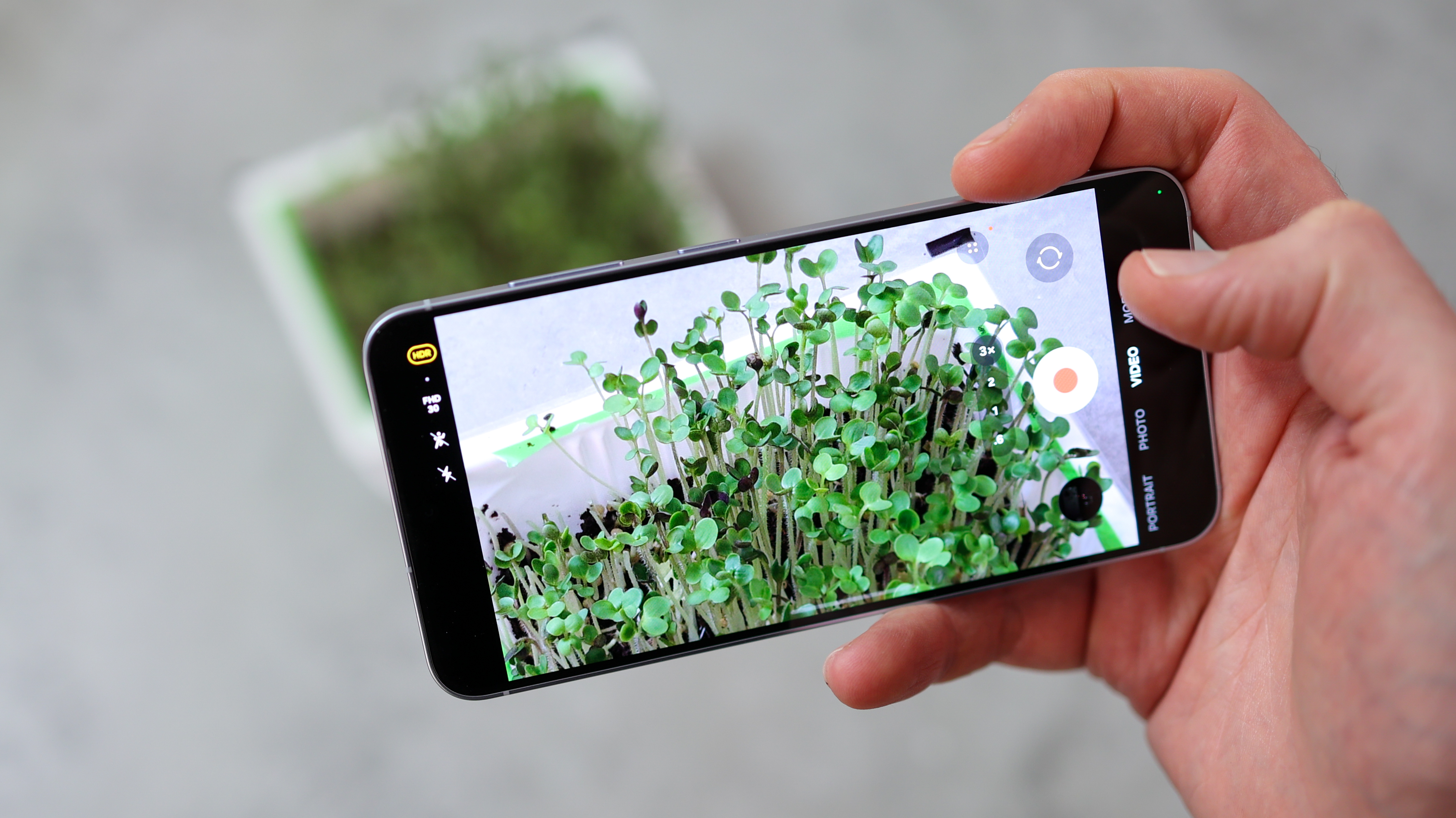
Samsung has also improved the nighttime video capture on the S25, with each frame in the video being a composite of exposures made possible by the power in the Snapdragon 8 Elite.
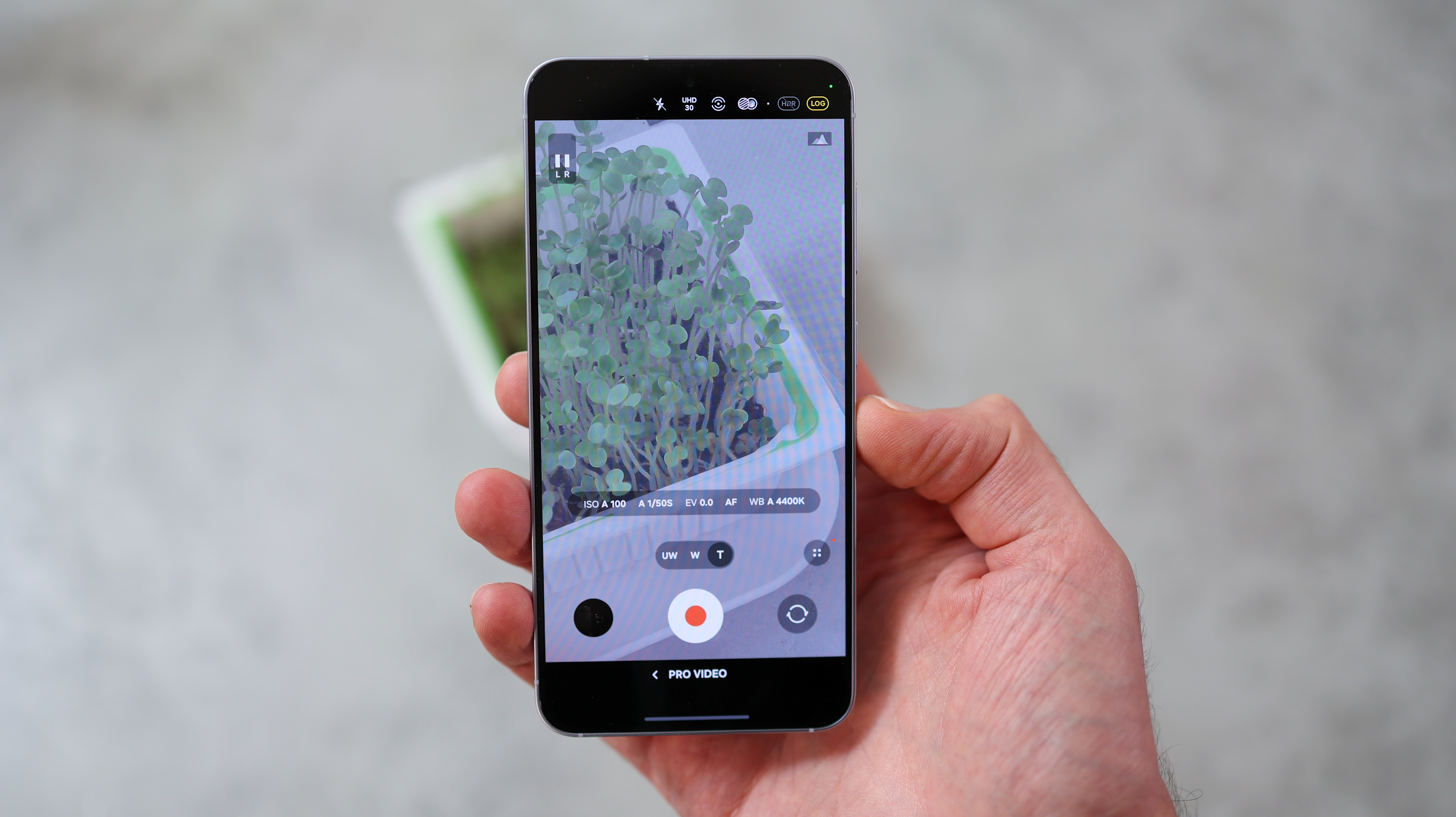
Samsung Galaxy S25 camera review
The first point to get out of the way when it comes to S25 picture quality is that the primary camera is the clear champion, with both the ultra-wide and telephoto cameras being weaker.
As we enter an era of flagship phones with secondary cameras not dropping the ball, each holding its own when needed, the Galaxy S25 shows the series’ camera hardware hasn’t evolved to rival phones like the Google Pixel 9, Oppo Find X8, Vivo X200, and even Vivo’s upper midrange V Series, with the V40 Pro doing a solid job across its rear camera mix.
Despite secondary camera limitations, between 0.6-5x zoom, in bright environments, all three pull up a usable shot. Samsung’s photo processing has improved, and while it isn’t our favorite, it’s reliably good enough when the light is right, with healthy of shadow and highlight detail.
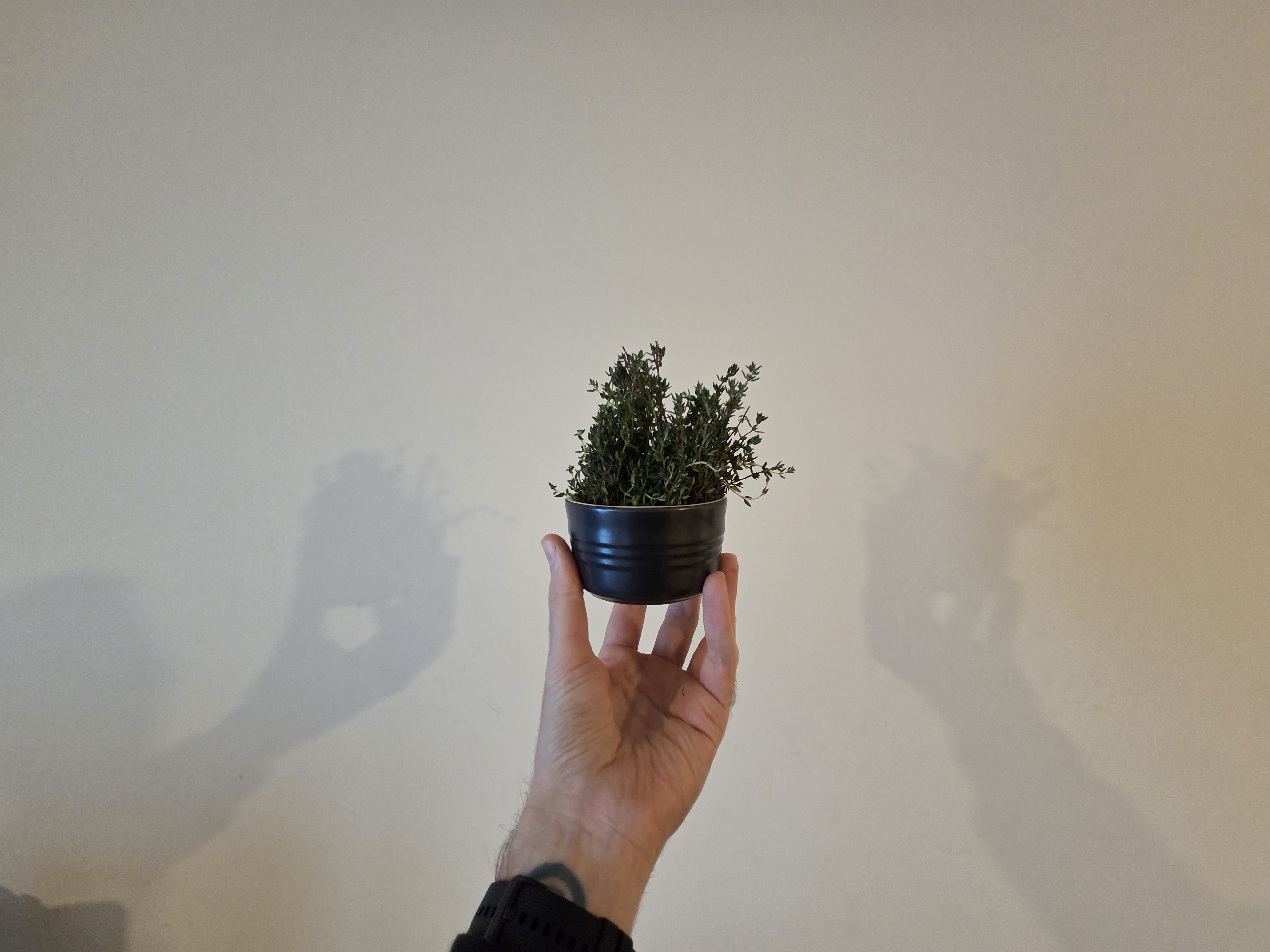
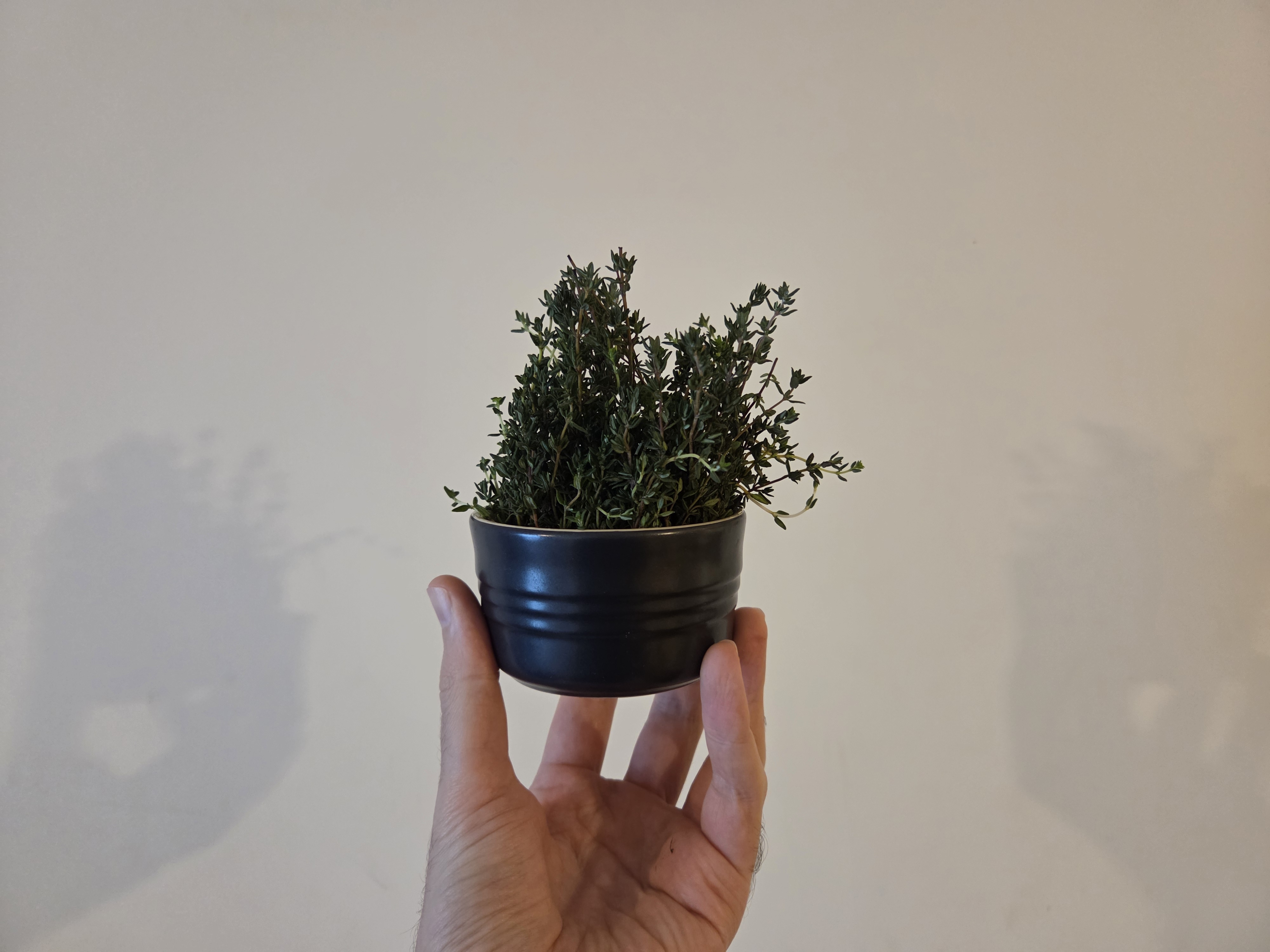
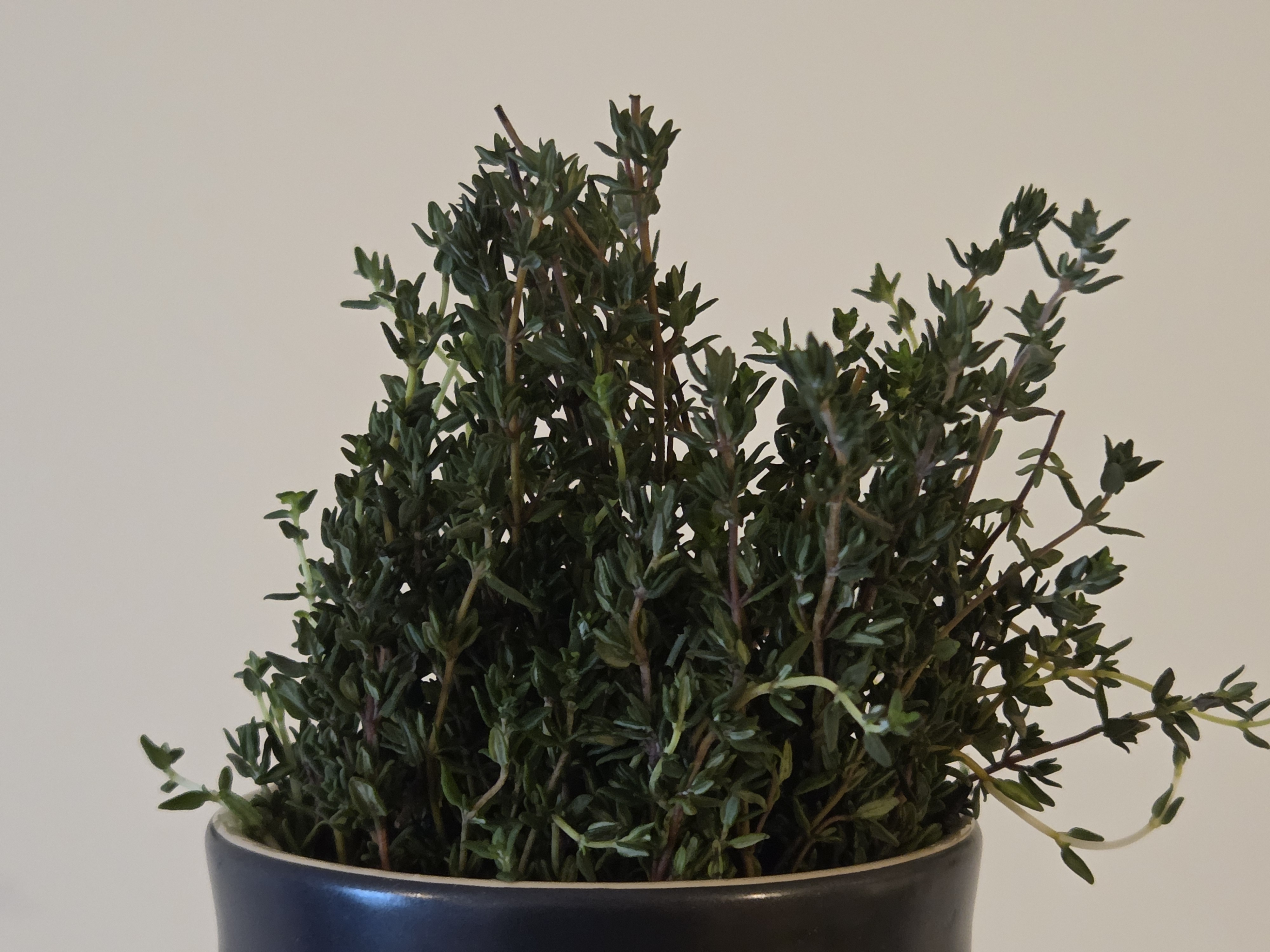
Samsung likes saturation and sharpening, but this can also detract from photos captured in low light, with artificial color introduced in a bid to zing up the shot. Specifically, the S25 tended to create purple tints in brightened shadows.
When zooming at 3x or beyond, the S25 will likely just be cropping into the primary camera. Samsung knows the 10MP, 3x zoom camera is very weak in all but the best lighting, so an in-sensor main camera crop is better most of the time. Indoors, therefore, we wouldn’t go beyond 3-4x zoom if we wanted shareable shots. Outdoors, however, AI kicks in to clean things up.

Galaxy S25 ultra-wide camera

Galaxy S25 primary camera

Galaxy S25 telephoto camera (3x)

Galaxy S25 telephoto camera 30x zoom
It’s a shame the ultra-wide doesn’t feature autofocus. However, it does capture with a very wide field of view, and distortion isn’t excessive, which is handy.
At night, the S25 benefits from a powerful auto night mode. However, it can create muddy-looking shots when there’s mixed lighting or artificial light to contend with, though the main camera does the best job of countering this.



We were also underwhelmed with the portrait mode on the S25, which typically benefits from a quality zoom which is lacking on Samsung's phone. While results look respectable on first impression, with great edge detection, compared to portraits we took on some Oppo, OnePlus, Vivo, and Xiaomi phones, the S25 is weak when you pinch into shots, with mediocre lowlight results and weaker detail.

One highlight is video, especially from the main camera. In bright environments, footage looks great, and at night, exposure is significantly boosted, generating a fair amount of noise, but pulling out detail where other phones struggle. For enthusiasts, it’s easy to override this with the new LOG capture, giving video enthusiasts a great tool when they need more control over their footage.
Samsung Galaxy S25 performance and battery
While the camera of the Pixel 9 edges ahead of that of the S25, one area we can’t fault Samsung’s flagship is performance. Powered by the Snapdragon 8 Elite, it delivers notable performance improvements over last year’s chip, which translate into meaningful day-to-day benefits including less heat buildup, much better gaming performance and a longer-lasting battery. It’s head and shoulders above the Galaxy S24 in this respect, and the Pixel 9 and 9 Pro as well.
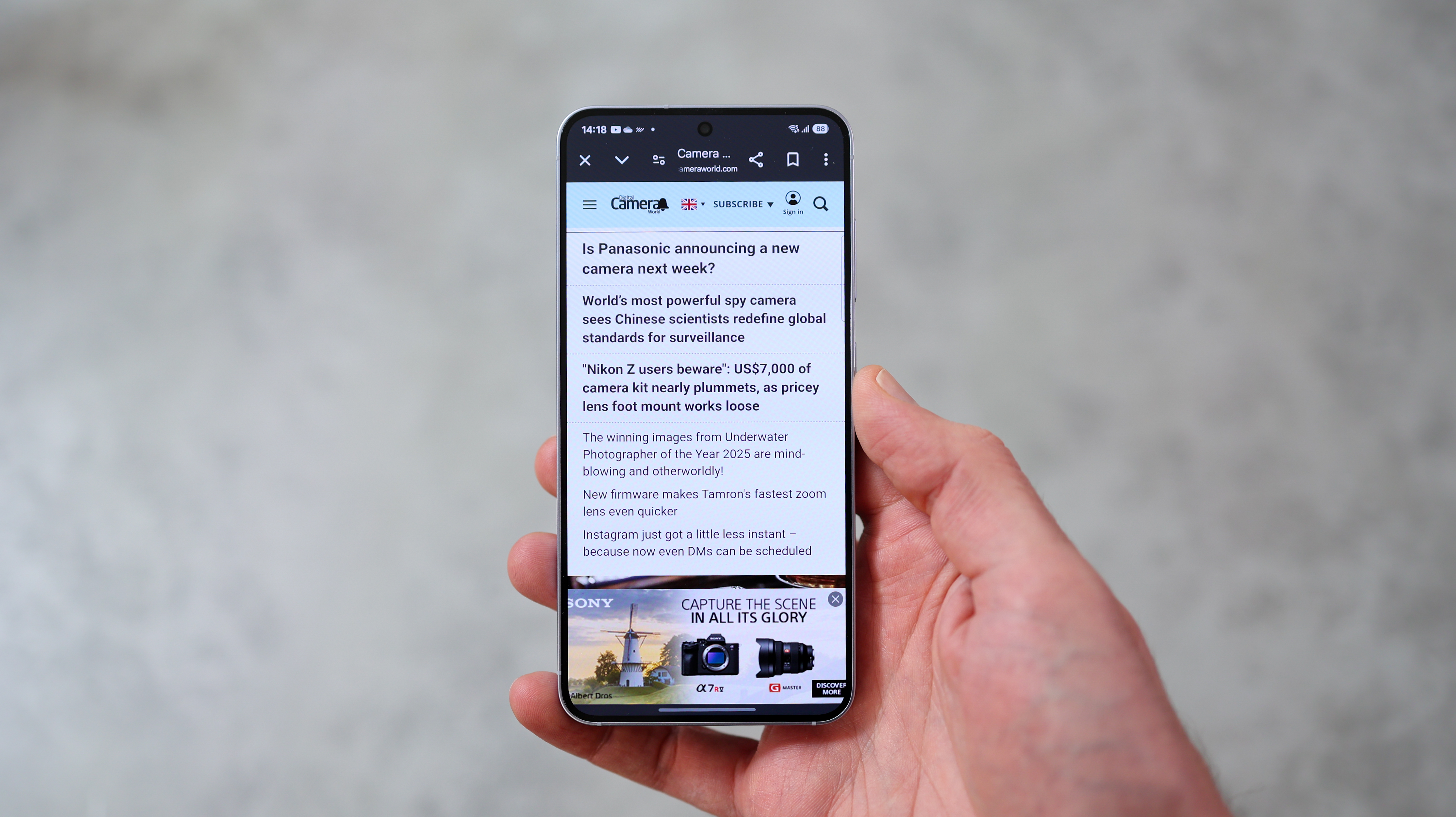
The S25 also gets 12GB RAM, just like the S25 Ultra, with storage options including 128GB, 256GB, and 512GB. We wish Samsung started at 256GB without bumping up the starting price as 128GB isn’t enough for most users today – and that would make the phone more competitive – however, Apple and Google are also starting at 128GB, so let's see who makes the leap first.
Gaming performance on the S25 is noteworthy, just because of how thin and light the phone is. Yes, it gets warm, but you can play top-tier titles at high graphics settings without excessive frames being dropped. This is also likely down to the vapour chamber cooling the S25 gets over the S24, and with its flat sides and screen, it’s also very comfortable to hold in landscape orientation and game on.
The S25 runs Android 15 with One UI 7 and promises seven years of OS and security updates, matching Google’s Pixel 9 and 9 Pro. This is a great reason to buy the S25; however, the new Galaxy AI features probably aren’t.
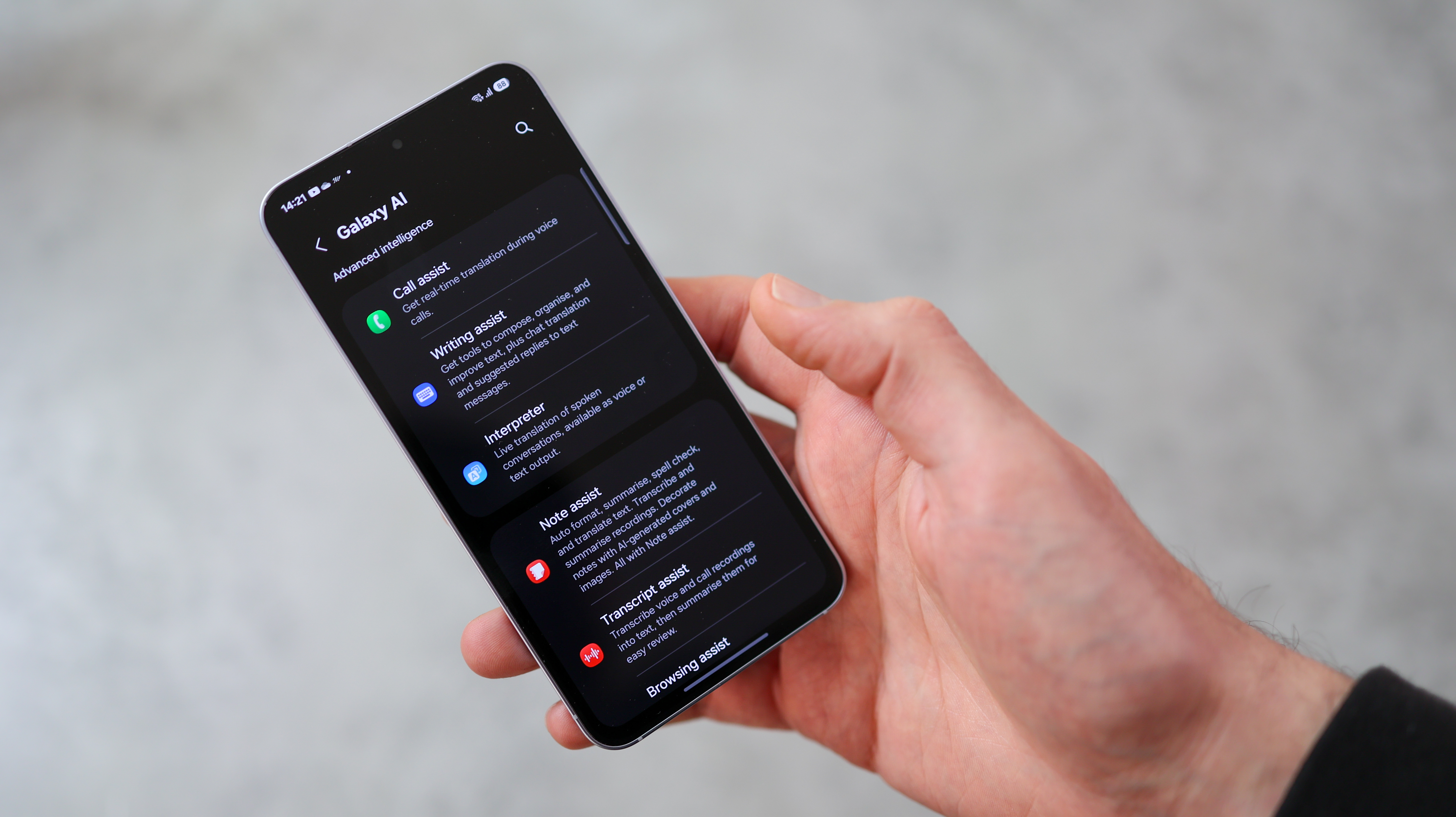
Now Brief creates personalized AI-generated summaries of the weather, news, and notifications that get to know you more over time. In the two weeks we spent using the phone, the summaries didn’t go beyond recommending songs or playlists on Spotify or videos on YouTube.
Live translation and text-to-image drawing assist also join the party, along with all of Samsung’s existing AI features introduced on the Galaxy S24, including recording transcription and summary, image editing tools, plus Google’s Circle to Search and Gemini.
Thankfully, the core Samsung experience is smooth, customizable, and doesn’t rely on AI to sell the phone, given it’s nice to have more than a necessity at the moment.
One thing that isn’t just nice to have is great battery life, and the Galaxy S24’s modest 4000mAh cell surprised us with its excellent performance. Lasting a very comfortable day with 15-20% remaining by the end of a long day, this is one of a handful of compact powerhousees that won’t let you down.
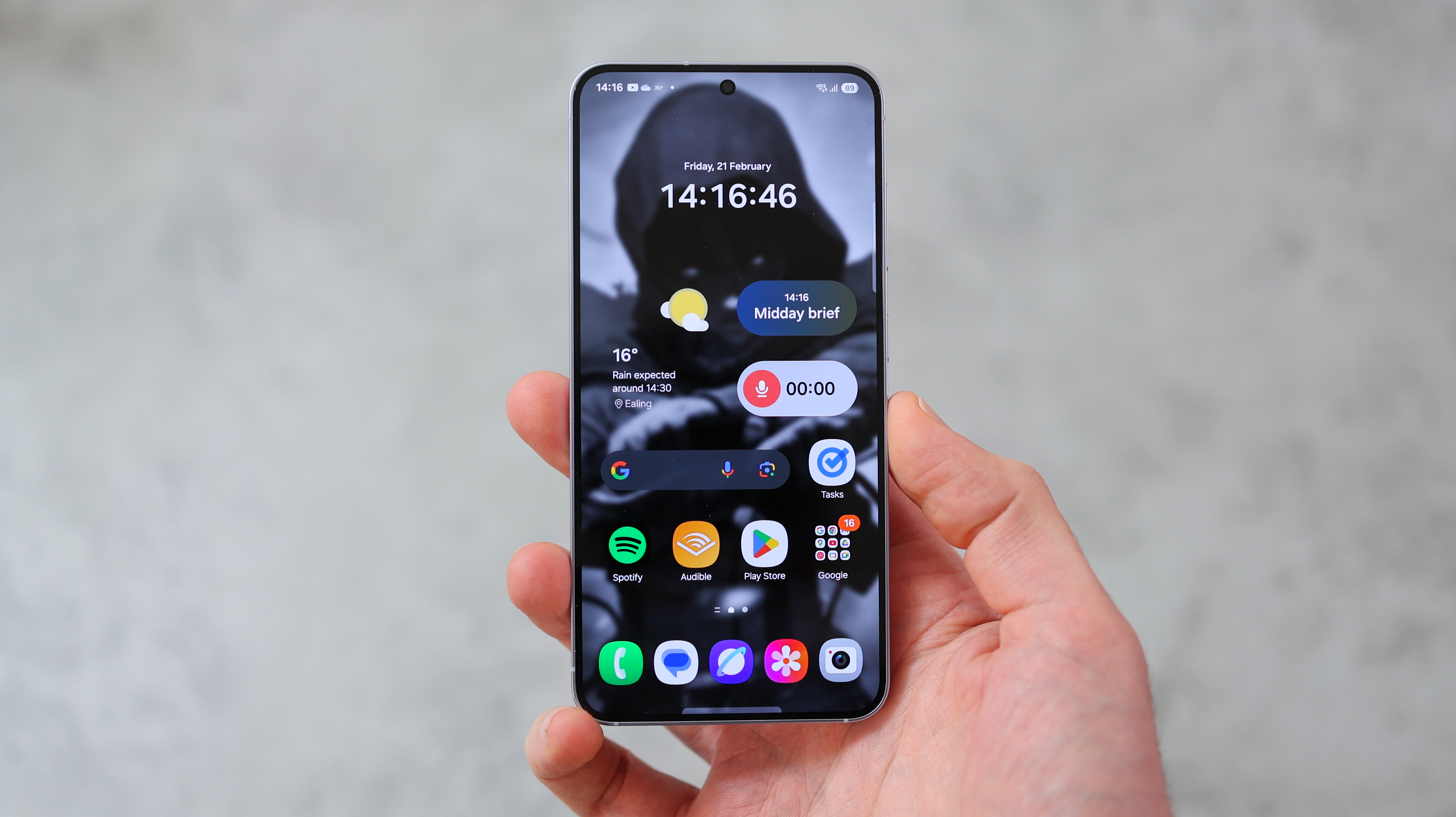
While charging could be quicker at just 25W wired and 15W wireless because the battery isn’t huge, the phone powers up fully in around 75 minutes, which isn’t great, but it isn’t a dealbreaker. Samsung also offers a Qi2-style magnetic charging case for wireless power-ups. However, it’s a shame it doesn’t ship with one out of the box or, better still, include magnetic charging without a case.
Samsung Galaxy S25 verdict
While the camera is mostly good, seldom great, and occasionally bad, the rest of the Galaxy S25 experience is exceptional, helped in no small part by the new Snapdragon 8 Elite chipset
Day-to-day use, battery life, gaming performance, and heat management are improved, and the impressive display, customizable interface, and long-term future-proofing only help the S25’s case.
So, while on-paper upgrades may seem immaterial, for anyone looking for a compact, thin phone, you’ll be hard-pressed to find better than the S25. However, if you're happy compromising on slimness, you can get a better camera and more storage for the same or less than Samsung's charging.
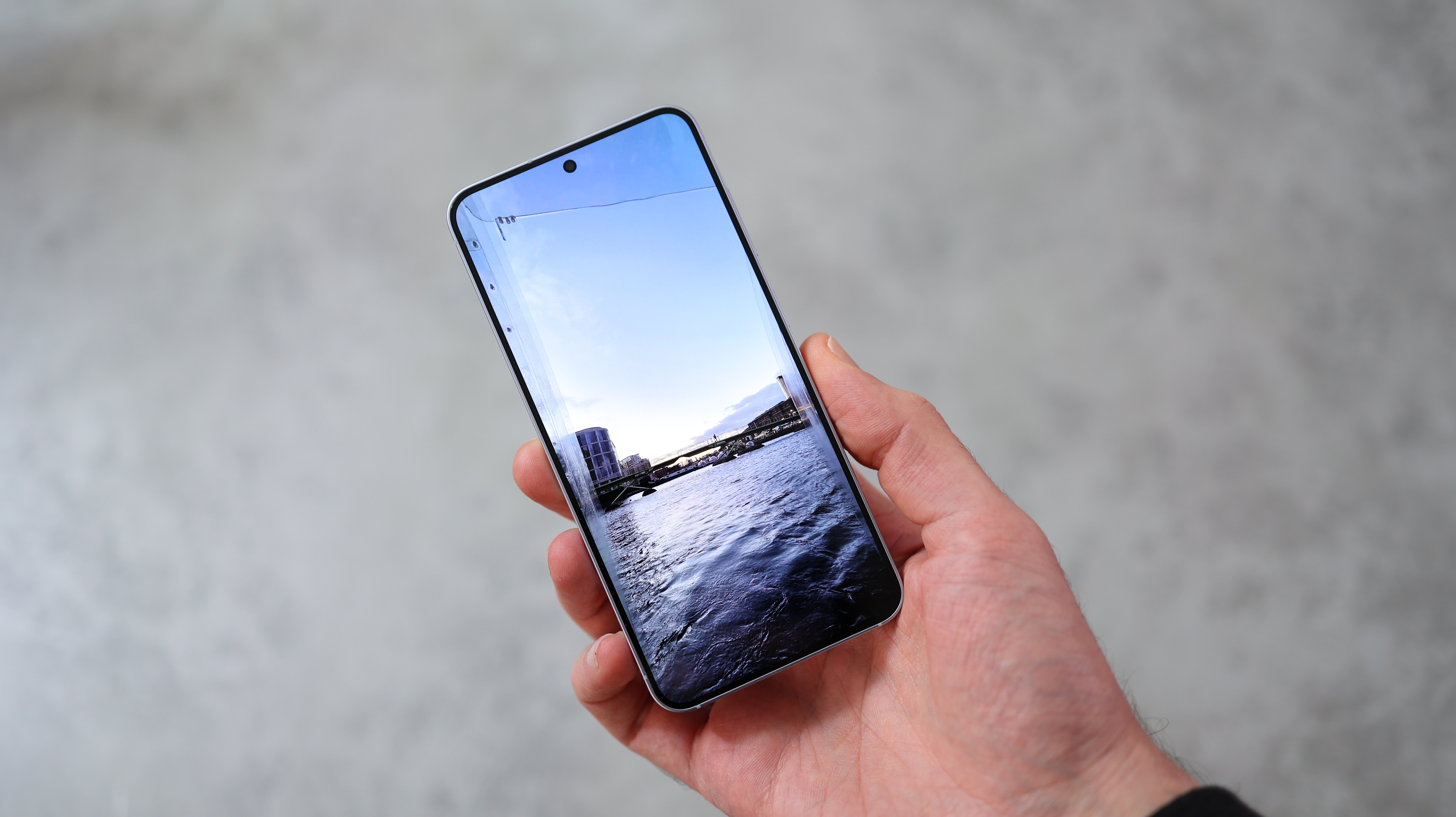
Samsung Galaxy S25 alternatives
The Google Pixel 9 is the obvious alternative to the S25. It’s the same price, has a better camera, and shares a similar compact form, though is chunkier. While its camera wins out for us, though, performance falls way behind for gaming, and with its weaker chipset, it’s also likely less future-proofed from a hardware point of view, even if the software promise matches that of Samsung.
If you don’t mind a bigger phone, the OnePlus 13’s cameras are much more competitive, its charging is much faster, and its also better for gaming given the extra room for heat dissipation. That said, OnePlus won’t match Samsung’s software support.
Alternatively, the Xiaomi 14 and upcoming Xiaomi 15 could be great options. More compact than the OnePlus 13, both phones feature Leica co-engineered cameras and a much better telephoto system. Just like OnePlus, though, Xiaomi’s software promise falls behind Samsung and Google’s.
Basil Kronfli is a freelance technology journalist, consultant, and content creator. He trained in graphic design and started his career at Canon Europe before moving into journalism. Basil is also experienced in video production, independently running the YouTube channel TechEdit, and during his time at Future, he worked alongside the Digital Camera World team as a senior video producer.
You must confirm your public display name before commenting
Please logout and then login again, you will then be prompted to enter your display name.
